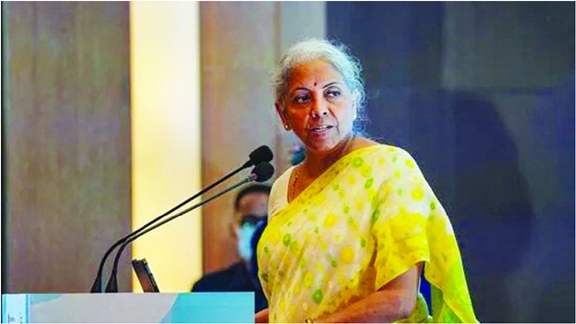New Delhi (TIP)- The Union government on Thursday, November 10, released two instalments of tax devolution totalling over Rs 1.16 lakh crore to states to help accelerate their capital expenditure and welfare activities. “The Union government has released two instalments of tax devolution to state governments amounting to Rs 1,16,665 crore today (Thursday), as against normal monthly devolution of Rs 58,333 crore,” the Union finance ministry said in a statement on Thursday. “This is in line with the commitment of Government of India to strengthen the hands of States to accelerate their capital and developmental expenditure.”
At the time when advanced economies are slowing down due to adverse geopolitical developments due to the Ukraine war and resorting to raising interest rates to calm unprecedented jump in inflation rates, the Indian economy is growing at a faster pace and government is making all efforts to keep it up, an official aware of the development said.
“The Centre quickly transfers money to states from the tax kitty so that they can accelerate pace of public expenditures – both in capex and developmental works,” the official said, requesting anonymity. “There is no delay, in fact, we are releasing money in advance.”
Money has been given upfront to the states so that they can frontload their capital expenditure and give infrastructure push that would propel the economic growth, the official added.
Notwithstanding global headwinds, the Indian economy is strong compared to other countries on the back of government’s three-pronged strategy — judicious mix of demand and supply side actions; timely, targeted and impact-oriented welfare measures; and an upthrust to public spending while balancing growth-inflation dynamics. Inflation in India is relatively low compared to other countries, including advanced economies (AEs). The Indian economy is also expanding faster compared to AEs.
Public expenditure, particularly capital investments, has been aggressively pursued for its multiplier effect on the economy. While the return on Rs 1 spent for revenue expenditure is only 45 paise, the same amount spent on infrastructure gets a return of Rs 2.45 in the first year and Rs 3.14, and Rs 3.25 in subsequent years, the official said. In order to have a multiplier impact of capex, the 2022-23 Union Budget raised capital expenditure by 35.4% to Rs 7.50 lakh crore in the current financial year from Rs 5.54 lakh crore in 2021-22.
Referring to the enhanced capital expenditure in 2022-23, finance minister Nirmala Sitharaman in her budget speech on February 1 had said: “With this investment taken together with the provision made for creation of capital assets through Grants-in-Aid to States, the ‘Effective Capital Expenditure’ of the Central Government is estimated at Rs 10.68 lakh crore in 2022-23, which will be about 4.1% of GDP (gross domestic product).” Source: HT
